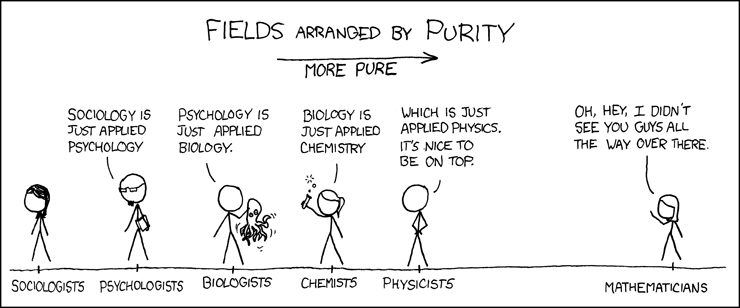Just put two π ohm resistors in series duh
Whats wrong with your 3!
Ugh, 3 factorial is most definitely not equal to π. It’s something more like, idk, 9? Honestly I don’t even know how I got here; I majored in Latin and barely past
Barely passed your English classes as well I assume. /s
They barely passed me.
In case anyone wondering factorial is
n! = n * n-1 * n-2 * … * 3 * 2 * 1
Erm. In what world do you live that the precedent in your expression is right?
In all languages and countries I know multiplication binds more strongly than addition. So what you wrote would be
n^2 - n - 2n - 3n…
I wrote it correctly. It is the definition of a factorial.
No, correctly it would be n * (n-1) * (n-2) * … * 3 * 2* 1
Or the actual recursive definition
1! = 1
n! = (n-1)! * n
π = 1
3! = 10Isn’t 3 factorial equal to 6??
Well…
g1/2 = e = 3 = pi
e = π = σ = ε = µ = Avogadro’s Number = k = g = G = α = i = j = 3
(at least that’s how they all look when viewed from ∞)
I was not ready for this truth bomb
Shouldn’t have i in there, or j if you’re using that to represent the imaginary number. The complex plane is separate.
Let epsilon be substantially greater than zero…
The list of things I shouldn’t do, but do regardless, stretches past infinity.
Imaginary numbers are best understood as symbolizing rotation. If we’re imagining a number line here, “looking back from infinity” - at a scale where Grahams number looks like the mass of an atom expressed in kilograms, i would not be in that infinite set of numbers, it would be a point above that line and creating a perpendicular plane to it.
I hate the term “imaginary” because it’s misleading. Most high school algebra teachers don’t understand what they are either, so people learn about these things called “imaginary” numbers, never learn any applications with them, hopefully graph them at best, and then move on understanding nothing new about math.
Students also tend to get really confused about it as possibly a variable, (it’s really annoying with in second year algebra courses, where e and logs also show up). We say “ah yeah, if you get a negative sign, just pull it out as an i and don’t worry about it. or just say no real solutions.”
Numbers like that are why I quit majoring in mechanical engineering. Physics took the beauty of math and made it ugly.
You knew something was wrong in calculus when you got a fucked up coefficient that wasn’t a nice number.
After calculus though, they just expect you to cope with fucked up coefficients. In Diff Eq, sometimes you do just get something like 3/111 cos (6/111 x). It gets harder to come up with examples that work out with nice integers.
Physics can also have some really beautiful math, look at Lissajous figures. Once you understand the connections between e, the imaginary plane, and sine/cosine, you get some profound understandings about how electric and magnetic fields work.
I actually really like physics, and it’s 100% because I’m fucked up and evil
Respect. Physics is way up there in terms of hard science nerd cred.

the philosopher floating on a cloud: So how do you guys really know what’s real?
The only application I can think of off the top of my head that would require that precision is a R2R DAC.
Just sort through a bin until you find one.
Ah yes, the old “send the new guy out to buy an isotropic antenna and an electron trap” on their first day
Can we do a fraction of an electron boss? The economy is kind of rough. Guy on the phone says he can do a time share too.
Sorry, we need two electrons with identical spin and orbitals. Better check the place across town.
Quantum Ampere Standard
https://www.nist.gov/noac/technology/current-and-voltage/quantum-ampere-standard
.
there also been research for defining a quantum volt and quantumly stable resistorshttps://www.nist.gov/noac/technology/current-and-voltage
Quantum-based measurements for voltage and current are moving toward greater miniaturizationP.S. :
https://en.m.wikipedia.org/wiki/Quantum_Hall_effect
Quantum Hall effect →
Applications →
Electrical resistance standards :(…) Later, the 2019 revision of the SI fixed exact values of h and e, resulting in an exact
RK = h/e2 = 25812.80745… Ω.(this is precise to at least 10 significant digits)
Nerd
Wait until they connect something to a battery.






